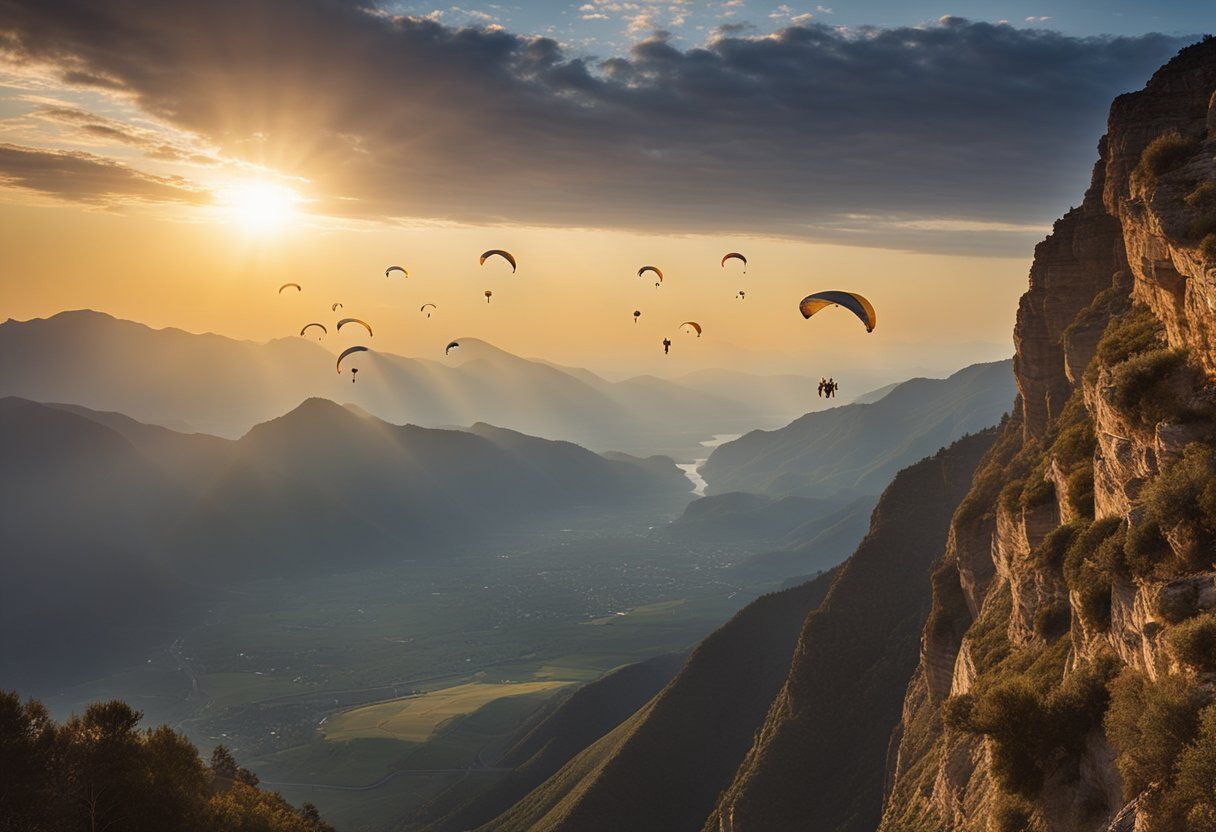To share
Discover essential tips for an unforgettable outback camping experience. Learn how to prepare like a pro, stay safe and make the most of your adventure.
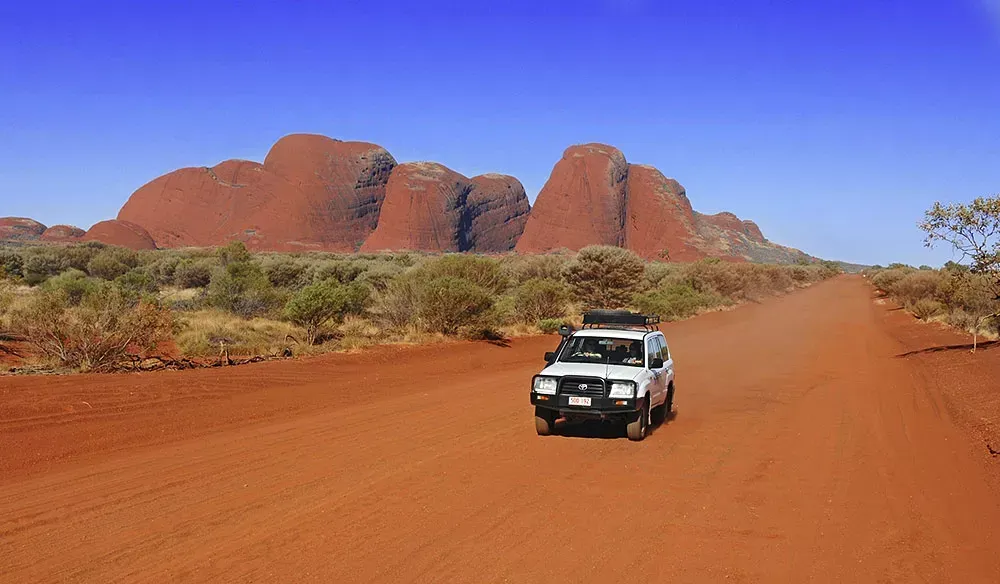
1. Understanding the Outback Environment
Climate and weather patterns
The Australian Outback is characterized by extreme weather conditions. Temperatures can soar above 40°C (104°F) during the day and plummet near freezing at night. Rainfall is scarce and unpredictable, with long periods of drought punctuated by occasional heavy downpours.
"In the Outback, weather isn't just a topic of conversation; it's a critical factor in your survival."
To prepare effectively:
- Check long-range weather forecasts before your trip
- Be ready for sudden temperature changes
- Plan your water usage carefully, accounting for the arid climate
Terrain and landscape challenges
The Outback's terrain varies from vast desert plains to rugged mountain ranges. This diverse landscape presents unique challenges:
- Sandy or rocky terrain can be difficult to navigate
- Lack of landmarks can make orientation challenging
- Rivers and creeks may be dry for most of the year but can flood rapidly
Understanding these challenges is crucial for planning your route and estimating travel times. I once underestimated the difficulty of traversing a seemingly flat desert expanse, which ended up taking twice as long as anticipated.
Local flora and fauna awareness
The Outback is home to a wide variety of plant and animal species, some of which can be dangerous if encountered unprepared. Key points to consider:
- Familiarize yourself with venomous snakes and spiders common to the area
- Learn to identify potentially harmful plants
- Understand the behavior of large animals like kangaroos and dingoes
Remember, respecting wildlife and maintaining a safe distance is not just for your safety, but also for the well-being of the animals.
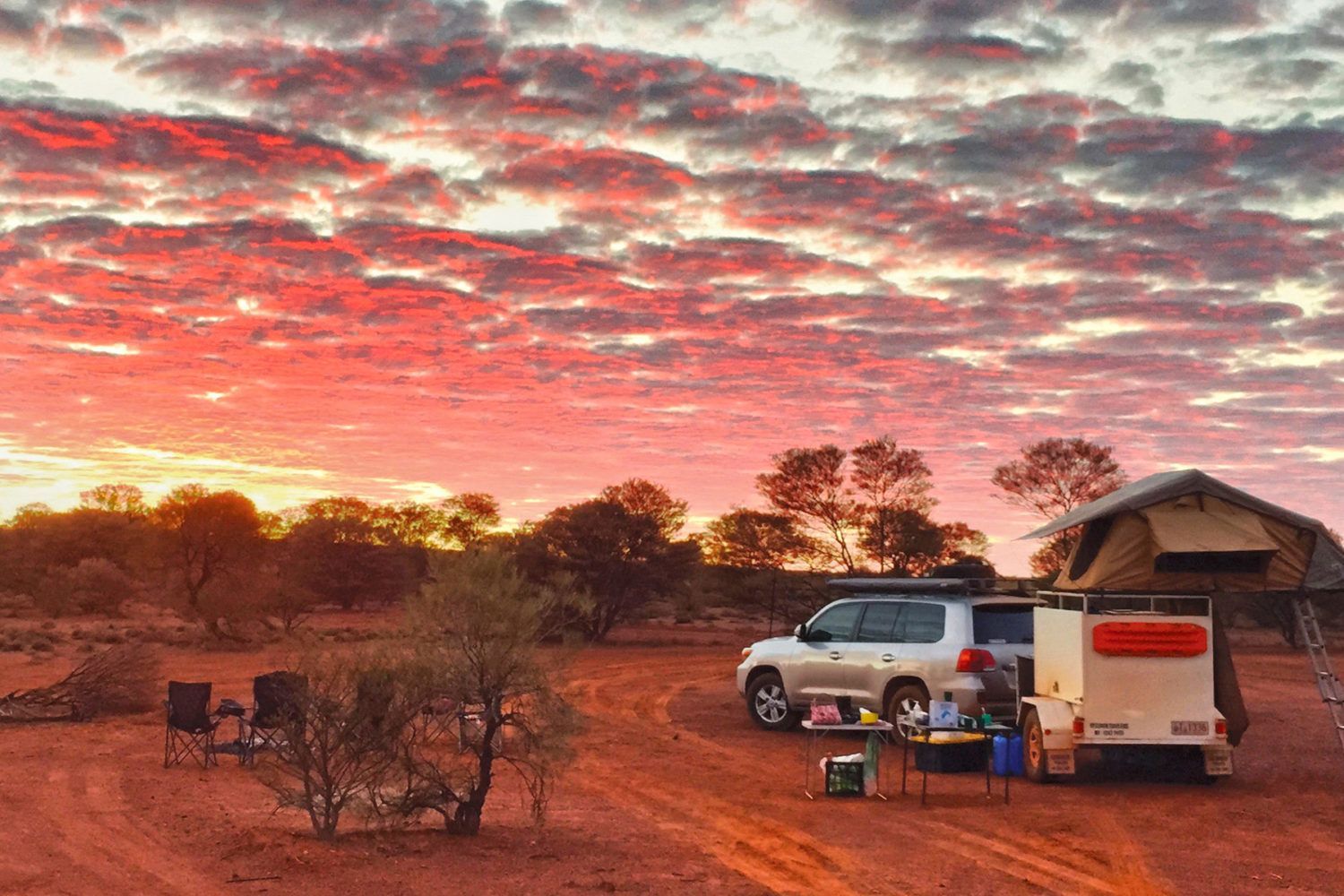
2. Essential Gear and Equipment
Shelter and sleeping arrangements
Proper shelter is critical in the harsh Outback environment. Consider:
- A high-quality, four-season tent that can withstand strong winds and occasional heavy rains
- Sleeping bags rated for both high and low temperatures
- Insulating sleeping mats to protect against the cold ground
In my experience, investing in a good quality tent has made a significant difference in comfort and safety during Outback camping trips.
Clothing and personal items
Appropriate clothing can protect you from the elements and potentially dangerous wildlife:
- Light, loose-fitting, long-sleeved shirts and pants for sun protection
- Wide-brimmed hat and sunglasses
- Sturdy, comfortable hiking boots
- Warm layers for cold nights
Don't forget essential personal items like sunscreen, insect repellent, and a basic first-aid kit.
Navigation and communication tools
In the vast expanses of the Outback, reliable navigation and communication tools are essential:
- GPS device with extra batteries or charging options
- Traditional map and compass as backup
- Satellite phone or personal locator beacon for emergencies
- Two-way radios for communication within your group
I always carry both digital and traditional navigation tools. There was an instance where my GPS malfunctioned, and the physical map proved invaluable in finding our way back to camp.
"In the Outback, your navigation and communication tools aren't just conveniences – they're lifelines."
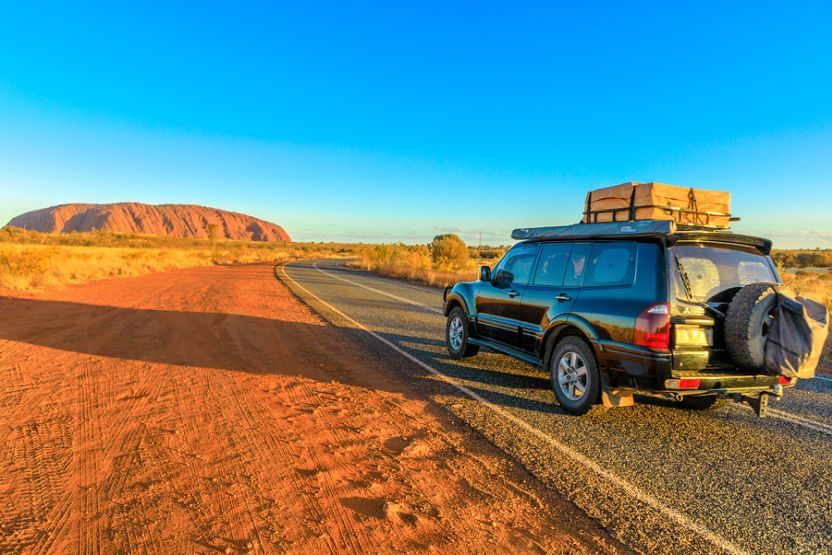
3. Food and Water Planning
Meal preparation and storage
When preparing for an outback camping adventure, meal planning and storage are crucial. Consider packing non-perishable foods that are lightweight and nutrient-dense. Opt for dehydrated meals, canned goods, and dry foods such as nuts, trail mix, and energy bars. Utilize airtight containers and resealable bags to keep food fresh and protected from wildlife.
For perishable items, invest in a high-quality cooler and use ice packs or frozen water bottles to maintain temperature. Plan your meals in advance, pre-cooking and freezing certain dishes to reheat at the campsite. This approach not only saves time but also reduces the risk of food spoilage.
Water sourcing and purification
Securing a reliable water source is paramount for any outback expedition. Research the area beforehand to identify potential water sources such as rivers, streams, or natural springs. However, never assume that natural water sources are safe for consumption without treatment.
Carry multiple water purification methods:
- Water filters: Portable filters can remove bacteria and protozoa.
- Chemical treatments: Iodine tablets or chlorine dioxide are effective against most waterborne pathogens.
- UV purifiers: These devices use ultraviolet light to neutralize harmful microorganisms.
- Boiling: A reliable method to make water safe for consumption.
Always carry more water than you think you'll need, as dehydration can be a serious risk in the outback.
Emergency rations and backup supplies
Pack emergency rations that require no preparation and have a long shelf life. These may include:
- Energy bars
- Dried fruits and nuts
- Canned foods with pull-tab lids
- Freeze-dried meals
Store these separately from your regular food supply and only use them in emergencies. Additionally, carry extra fuel for cooking and water purification tablets as backup.
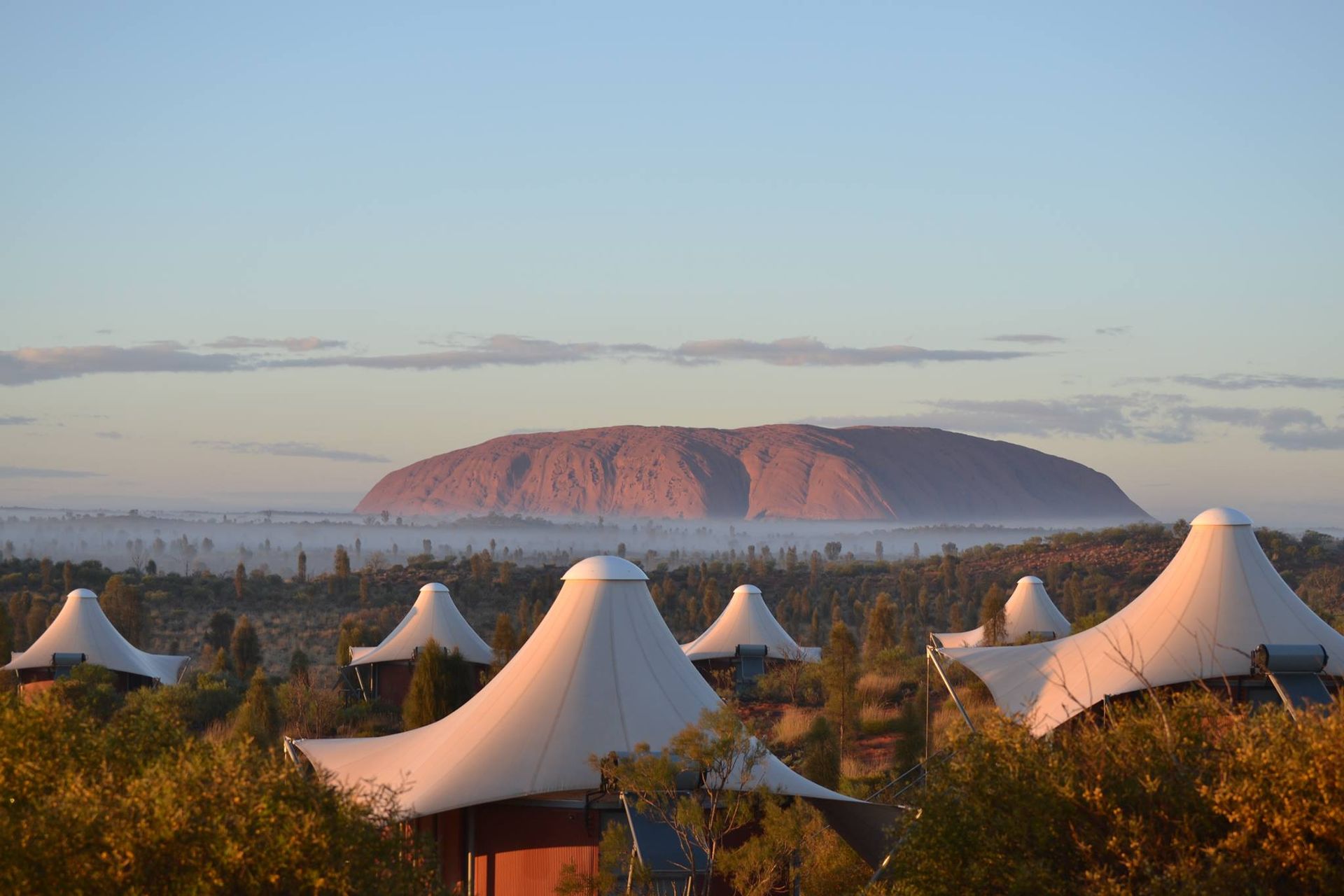
4. Health and Safety Considerations
First aid kit essentials
A comprehensive first aid kit is essential for any outback adventure. Your kit should include:
- Bandages and gauze of various sizes
- Antiseptic wipes and ointment
- Pain relievers and anti-inflammatory medication
- Tweezers and scissors
- Blister treatment supplies
- Emergency blanket
- Personal medications
Ensure all members of your group are familiar with the contents and basic first aid procedures.
Managing common health risks
Be aware of potential health risks specific to the outback environment:
- Sunburn and heat exhaustion: Use high SPF sunscreen, wear protective clothing, and stay hydrated.
- Insect bites: Apply insect repellent and wear long sleeves and pants, especially during dawn and dusk.
- Snake bites: Wear sturdy boots and be cautious when walking through tall grass or rocky areas.
- Allergic reactions: Carry antihistamines if you or your group members have known allergies.
Emergency procedures and protocols
Establish clear emergency procedures before your trip:
- Designate an emergency contact person who knows your itinerary and expected return date.
- Carry a satellite phone or emergency beacon for areas without cellular coverage.
- Learn basic navigation skills and carry physical maps and a compass as backups to GPS devices.
- Familiarize yourself with the local emergency services and their contact information.
- Develop a plan for various scenarios such as getting lost, injury, or severe weather conditions.
Remember:
In the outback, being over-prepared is always better than being under-prepared. Thorough planning and preparation can make the difference between a memorable adventure and a dangerous situation.
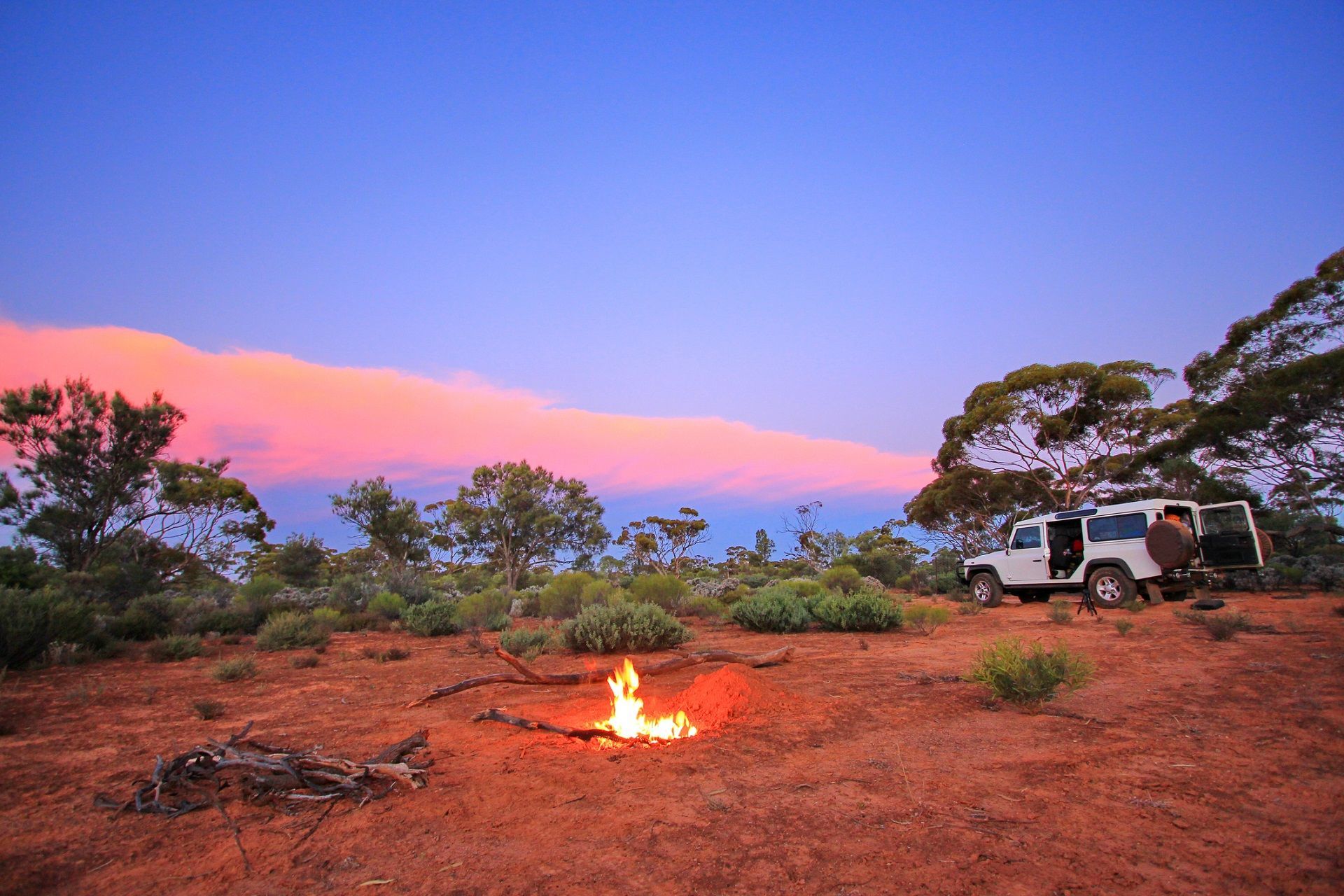
5. Transportation and Route Planning
Choosing the right vehicle
When preparing for an outback camping adventure, selecting the appropriate vehicle is crucial. Consider the following factors:
- Four-wheel drive capability: Essential for navigating rough terrain and unpaved roads
- Ground clearance: Higher clearance helps avoid damage from rocks and obstacles
- Fuel efficiency: Longer distances between fuel stops require a vehicle with good mileage
- Storage capacity: Ensure enough space for camping gear, supplies, and emergency equipment
- Reliability: Choose a vehicle with a proven track record for durability in harsh conditions
Personal experience: During my first outback trip, I underestimated the importance of ground clearance. My sedan struggled with rocky paths, causing delays and stress. I've since learned that a 4WD with high clearance is invaluable for these adventures.
Mapping your journey
Proper route planning is essential for a safe and enjoyable outback experience. Follow these steps:
- Research your destination: Gather information about the areas you plan to visit
- Use reliable mapping tools: Combine physical maps with GPS devices and smartphone apps
- Plan your stops: Identify campsites, fuel stations, and points of interest along your route
- Consider seasonal factors: Be aware of weather patterns and road conditions during your travel period
- Allow for flexibility: Build extra time into your itinerary for unexpected delays or detours
Tip: Always inform someone of your planned route and expected return date before embarking on your journey.
Fuel and maintenance considerations
Ensuring your vehicle is well-maintained and properly fueled is critical for outback travel. Keep these points in mind:
- Fuel capacity: Calculate your fuel needs based on distance and vehicle consumption
- Jerry cans: Carry additional fuel in approved containers for extended trips
- Regular maintenance: Service your vehicle before the trip and carry essential spare parts
- Tire care: Check tire pressure regularly and carry a reliable spare tire
- Emergency kit: Pack tools, jumper cables, and other necessary equipment for basic repairs
Personal opinion: I believe it's better to overestimate fuel needs than to risk running out in remote areas. I always carry more fuel than I think I'll need, just to be safe.
Remember, thorough preparation in transportation and route planning can significantly enhance the safety and enjoyment of your outback camping adventure. Take the time to carefully consider these aspects before setting out on your journey.
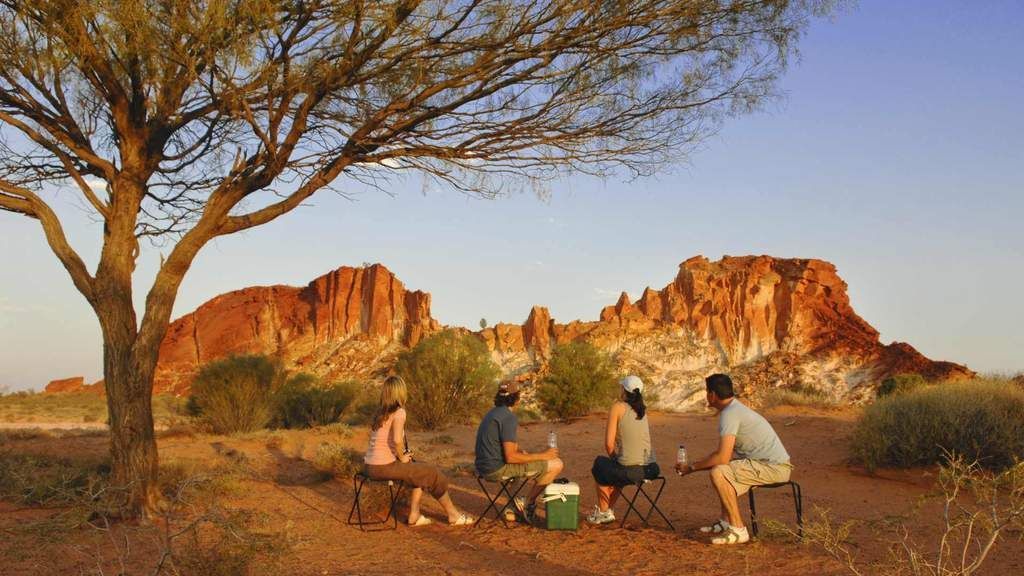
6. Campsite Selection and Setup
Identifying suitable locations
When selecting a campsite in the outback, consider the following factors:
- Proximity to water sources
- Level ground for tent placement
- Natural shelter from wind and sun
- Safe distance from potential hazards (e.g., dead trees, flash flood areas)
- Compliance with local regulations and permit requirements
Always research and obtain necessary permits before camping in protected areas.
Establishing a safe and comfortable camp
To set up a safe and comfortable campsite:
- Clear the area of debris and potential hazards
- Position tents away from cooking areas to minimize wildlife attraction
- Set up a designated food storage area
- Create a communal area for group activities
- Establish a sanitation zone away from water sources and camp areas
Leave No Trace principles
Adhere to Leave No Trace principles to minimize environmental impact:
- Plan ahead and prepare
- Travel and camp on durable surfaces
- Dispose of waste properly
- Leave what you find
- Minimize campfire impacts
- Respect wildlife
- Be considerate of other visitors
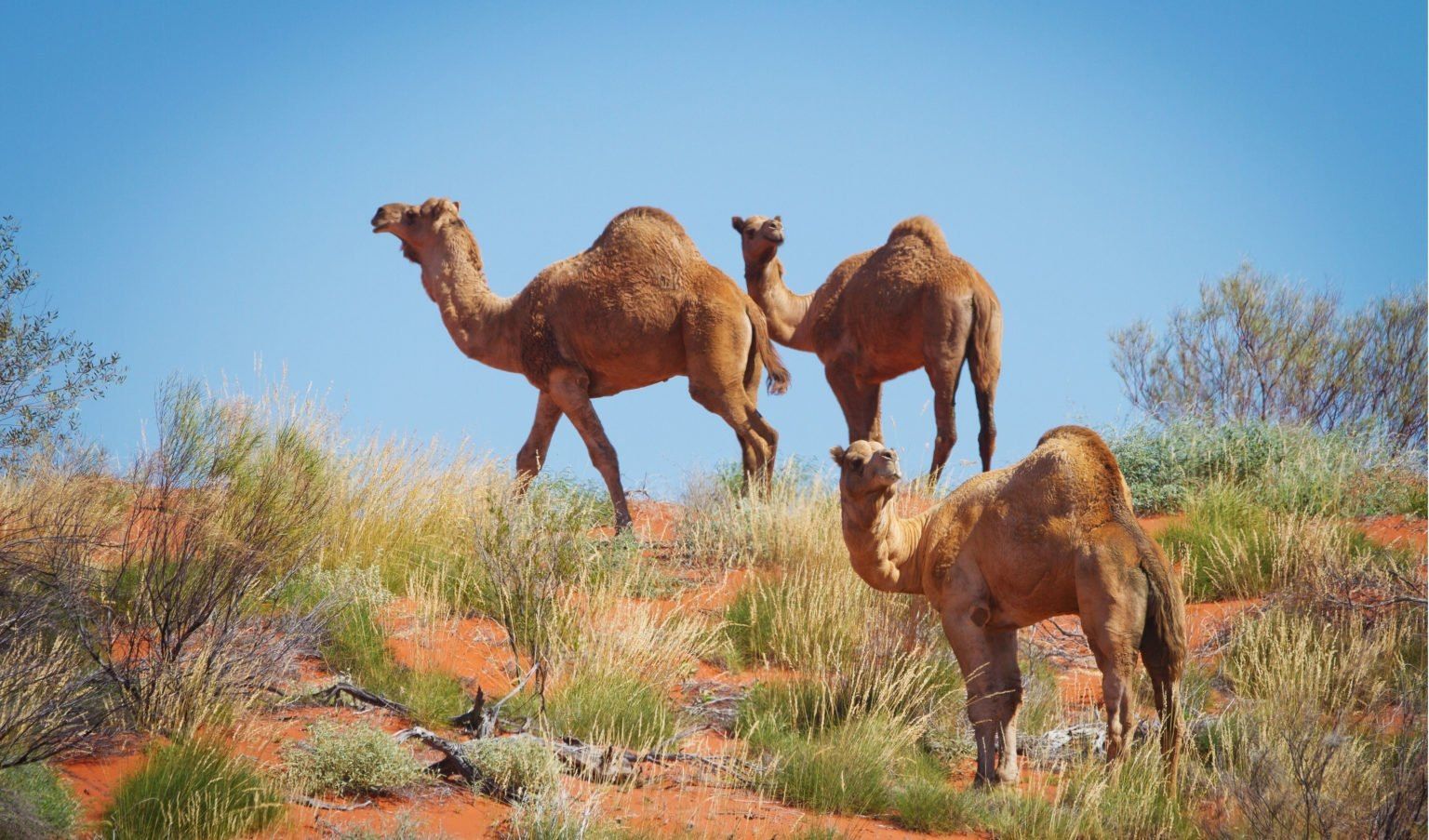
7. Wildlife Encounters and Precautions
Understanding animal behavior
To safely coexist with wildlife:
- Research common animals in the area
- Learn to recognize signs of animal presence
- Understand typical behavior patterns and potential threats
- Maintain a respectful distance from all wildlife
Food storage and waste management
Proper food storage and waste management are crucial:
- Use airtight, odor-proof containers for food storage
- Store food away from sleeping areas
- Hang food supplies from trees when possible
- Pack out all trash and leftover food
- Use designated waste disposal facilities or carry waste out with you
Defensive measures and safety techniques
In case of wildlife encounters:
- Remain calm and avoid sudden movements
- Make yourself appear larger by raising your arms
- Use a loud, firm voice to deter animals
- Carry and know how to use wildlife deterrents (e.g., bear spray)
- Never run from predators; back away slowly while facing the animal
Summary
Preparing for an outback camping adventure requires careful planning and consideration of various factors. By selecting appropriate campsites, following Leave No Trace principles, and taking necessary precautions for wildlife encounters, campers can ensure a safe and enjoyable experience while minimizing their impact on the environment.
Frequently Asked Questions
What permits do I need for outback camping?
Permits required for outback camping vary by location. Generally, you'll need a camping permit and possibly a vehicle entry permit. Check with the local park or land management authority for specific requirements in your chosen camping area.
How much water should I bring per person per day?
Plan to bring at least 4-5 liters of water per person per day for drinking and cooking. In hot conditions, increase this to 6-7 liters. Always carry extra water for emergencies.
What are the best food options for outback camping?
A3: Choose non-perishable, lightweight foods that are easy to prepare. Good options include dried fruits, nuts, canned goods, instant noodles, and dehydrated meals. Don't forget to bring a portable stove and cooking utensils.
How do I handle toilet waste in the outback?
Use a portable camping toilet or dig a small hole at least 15cm deep and 100m away from water sources. Cover the waste with soil after use. Always pack out toilet paper and sanitary products.
What should I do if I encounter a venomous snake?
A5: Stay calm and slowly back away. Most snakes will avoid humans if given the chance. If bitten, keep the affected limb still, apply a pressure bandage, and seek medical help immediately. Do not attempt to catch or kill the snake.
How can I protect myself from extreme heat in the outback?
A6: Wear light-colored, loose-fitting clothing and a wide-brimmed hat. Stay hydrated, avoid strenuous activities during the hottest parts of the day, and seek shade when possible. Use sunscreen with a high SPF regularly.
What essential items should I pack for an outback camping trip?
A7: Essential items include a first aid kit, map and compass (or GPS), plenty of water, non-perishable food, appropriate clothing, a tent, sleeping bag, flashlight, and a multi-tool. Also, bring a satellite phone or personal locator beacon for emergencies.
How do I safely build and manage a campfire in the outback?
A8: Check local fire regulations first. If allowed, choose a clear area, create a fire pit surrounded by rocks, and keep the fire small. Never leave it unattended, and fully extinguish it with water before leaving. In fire ban seasons, use a portable gas stove instead.
How can I minimize my impact on the outback environment?
Follow the "Leave No Trace" principles. Pack out all trash, stay on designated trails, respect wildlife, and avoid damaging vegetation. Use biodegradable soap for washing, and dispose of wastewater away from natural water sources.
What precautions should I take for vehicle safety in the outback?
Ensure your vehicle is in good condition and suitable for off-road driving. Carry extra fuel, water, and spare tires. Let someone know your travel plans and expected return date. Consider hiring a satellite phone for remote areas with no mobile coverage.




